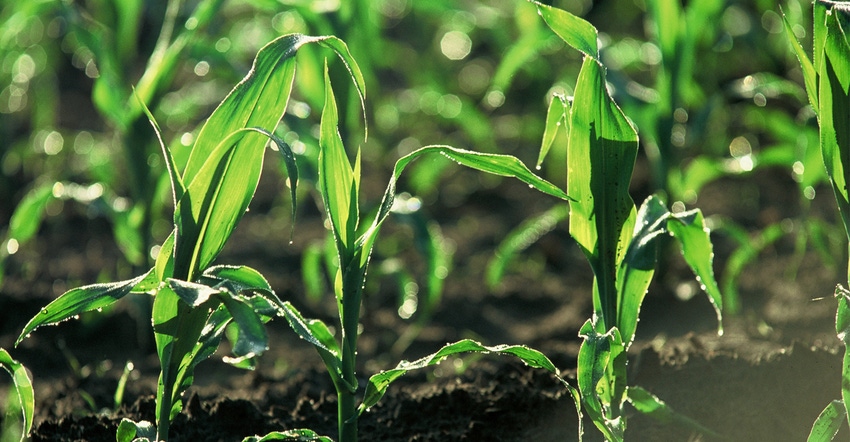
This year’s fertilizer market is a combination of the good and the bad.
“We will have supply. I don’t think we had a situation where we ever haven’t had supply,” said Russ Mothershead II, nitrogen product manager of Nutrien Ag Solutions.
Mothershead delivered that good news, with a healthy helping of not-so-good news during South Dakota Soybean Association’s AgOutlook Conference. “We just may not like the numbers that it takes to get the tons in place, especially if we have to compete,” he said.
After painting a picture of the supply-and-demand issues facing the global fertilizer market, Mothershead filled in the blanks with where prices stood in early December as compared to the same prices a year ago.
Ammonia prices at New Orleans, La. (NOLA) are 384% over a year ago, and 244% higher in the Corn Belt. Other price changes from a year ago are:
NOLA urea, up 264%
Corn Belt urea, up 200%
NOLA urea ammonium nitrate, up 354%
Corn Belt UAN, up 275%
NOLA and Corn Belt diammonium phosphate, up almost 100%
NOLA monoammonium phosphate and potash, up 230%
Corn Belt potash, up 180%
Though that price outlook isn’t encouraging, Mothershead said farmers are being advised to stay the course.
“We’re advising folks just to physically go ahead and get product moved into position. We are making decisions and we are putting things in place, and so I think there’s a temptation to wait and hope for lower prices,” he said. “I think we’ll see some resets this summer, but it definitely looks very firm and supportive as we get into Q1.”
Faced with higher fertilizer prices for the next growing season, farmers can use tools on hand to make efficient choices, and perhaps spread the fertilizer dollars a little further.
See what you need
“Focus on getting the soil test results back and fertilizing according to those needs,” says Jason Clark, South Dakota State University assistant professor and Extension soil fertility specialist. “Our fertilizer recommendations are based on sufficiency. If you’re at the critical value, there’s a very low probability that you’re going to see an increase of yield from adding fertilizer. Many farmers also add grain nutrient removal rates of fertilizer in addition to the sufficiency fertilizer rate.
“One way to save on fertilizer is to eliminate adding that removal rate for a year while we’re dealing with high prices, which shouldn’t affect your yield or your soil test values enough to justify extreme fertilizer costs. Soil-test values may decrease over time, so continue to soil-test and watch those values to see if you need to work on building them back up when fertilizer prices are more affordable.”
On the topic of soil tests, Clark suggested testing for nitrogen before planting corn, wheat or other crops need large amounts of nitrogen because “nitrogen is more biologically mediated.” Levels of phosphorus and potassium do not “change a ton,” so he said most producers will test soil for P and K every three or four years, depending on their crop rotation.
Clarks added that timing of soil tests can determine accurate readings. Values of immobile nutrients such as P and K vary by season, so he suggested consistency with sampling — either always in the fall or always in the spring. Nitrogen and sulfur values are more impacted by temperature and moisture. “You want to sample in late fall after the soil is below the 50-degree threshold for microorganisms breaking down residue that increases soil nitrogen supply, or sample in early spring,” he said.
Once farmers perform their soil tests, they must trust the results, said Anthony Bly, SDSU Extension soils field specialist. “While soil testing is not a perfect approach, it can be as good or as great as the effort we put into it,” he said. “Then look at university recommendations and do what that recommendation says. If it says ‘zero,’ I would believe it.”
Bly sees farmers falling into the trap of needing to do crop removal as part of a fertilizer program. “That’s what soil testing is really all about is that it helps producers and agronomists keep their soil tests where they should be,” he said.
Determine optimal yields
In a year that farmers will be faced with high input costs, Bly suggested they take a hard look at their yield goal — “not the yield you want, but the yield that you can get.”
He pointed to the yield response curve, which is highly influenced by the amount of nutrients left in the soil. “You get the biggest response from the first initial nitrogen that you apply,” he said.
To determine your yield goal, Bly advised to look at actual yields from the last five to 10 years, remove the highest and the lowest yields, and average the remaining yields. “If you want to be aggressive, go for maybe 8% higher than your average,” he said. “But maybe now that we have high fertilizer prices, maybe we don’t get that aggressive. Maybe we just use that average.”
Individual farmers will need to decide what’s best for their farm’s bottom line. “We’re making sure that every dollar we put into nitrogen is a responsive dollar,” he said.
You can view the nitrogen response curve on Bly’s fact sheet, Determining an Economically Optimal Nitrogen Rate for Corn in 2022.
About the Author(s)
You May Also Like






